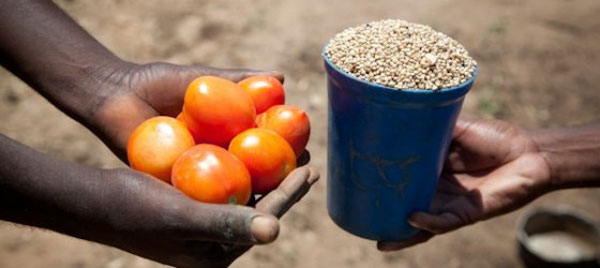Bartering and trading, the lifeblood of societies since time immemorial, paint a vibrant and intricate tapestry in the annals of traditional South African communities. These practices, steeped in cultural customs and economic necessities, shaped the lives and livelihoods of countless individuals, fostering connections and shaping the fabric of society. Embark on a journey as we explore the fascinating world of trade and currency in traditional South Africa, uncovering the ingenuity, resilience, and complexities that define these age-old traditions.

Image: learn.e-limu.org
A Journey into the Roots of South African Trade
Ancient trade routes, like threads in a vast tapestry, crisscrossed the African continent, connecting disparate communities and facilitating the exchange of goods, ideas, and technologies. The Khoisan, renowned for their hunter-gatherer lifestyle, engaged in extensive trade networks, exchanging animal skins, ivory, and ostrich eggshells for beads, copper, and iron. Pastoralist communities, such as the Nguni and Sotho, traded livestock, dairy products, and handcrafted items with neighboring agricultural societies. These trading networks not only sustained livelihoods but also fostered cultural exchange and strengthened bonds between different groups.
Money in Traditional Societies: Beyond Coins and Bills
In traditional South African societies, the concept of money extended beyond coins and bills, assuming diverse forms that reflected the unique circumstances and values of each community. Livestock, particularly cattle, reigned supreme as a medium of exchange and a store of value. The possession of cattle signified wealth, social status, and economic power. Various cultural practices, such as lobola (bride price), relied heavily on the exchange of cattle.
Other forms of traditional currency included beads, seashells, and metal ornaments, each carrying specific value and cultural significance. Beads, often crafted from glass or stone, served as both currency and adornment, reflecting social status and group affiliation. Seashells, brought inland from coastal regions, held immense value in certain communities, serving as a means of exchange for goods and services.
Bartering: The Art of Negotiation and Reciprocity
Bartering, the direct exchange of goods and services without the use of money, remained a vital aspect of trade in traditional South African societies. This practice fostered a deep understanding of local resources and needs, promoting interdependence and cooperation within communities. Bartering allowed individuals to trade surplus goods for essential items, ensuring a fair distribution of resources and strengthening communal bonds.
From intricate woven baskets to freshly slaughtered game, the range of goods exchanged through bartering was vast and varied. The art of negotiation played a crucial role in these transactions, as individuals sought to strike equitable deals that benefited both parties. Trust, reciprocity, and an understanding of local market conditions were essential elements in successful bartering.

Image: www.pinterest.com
The Introduction of Colonial Currency and Its Impacts
The arrival of European settlers in South Africa marked a significant turning point in the history of trade and money. Colonial authorities introduced their own currencies, gradually replacing traditional forms of exchange. While initially met with resistance, colonial currency eventually gained widespread acceptance, transforming the economic landscape of the region.
The imposition of colonial currency had far-reaching consequences for traditional South African societies. It disrupted established trade networks, undermined the value of traditional forms of currency, and fostered dependency on imported goods. Colonial policies and taxation systems further marginalized traditional economic practices, exacerbating social and economic inequalities.
Preserving and Adapting Traditional Practices in the Modern Era
Despite the challenges posed by colonialism and modernization, traditional trade and money practices have not vanished entirely. In many rural areas, bartering and the use of traditional forms of currency persist, albeit in diminished form. Community markets and cultural events provide platforms for the exchange of goods and the preservation of traditional practices.
Furthermore, contemporary artists and entrepreneurs are finding innovative ways to incorporate traditional motifs and symbolism into modern products, preserving cultural heritage while adapting to changing economic realities. Through these efforts, traditional trade and money practices continue to evolve, finding new expressions in a rapidly changing world.
Trade And Money In Traditional Societies South Africa
Conclusion
The intricate tapestry of trade and money in traditional South African societies showcases the ingenuity, resilience, and adaptability of these communities. From ancient trade routes and diverse forms of currency to the art of bartering and the interplay with colonial influences, this rich history offers valuable insights into the foundations of South African society. Preserving and learning from these practices not only honors cultural heritage but also provides inspiration for sustainable economic models in the present and future. As we continue to navigate the complexities of modern economies, understanding the roots of trade and money in South Africa empowers us to appreciate the enduring legacy of our shared past and build a more equitable and prosperous future.






